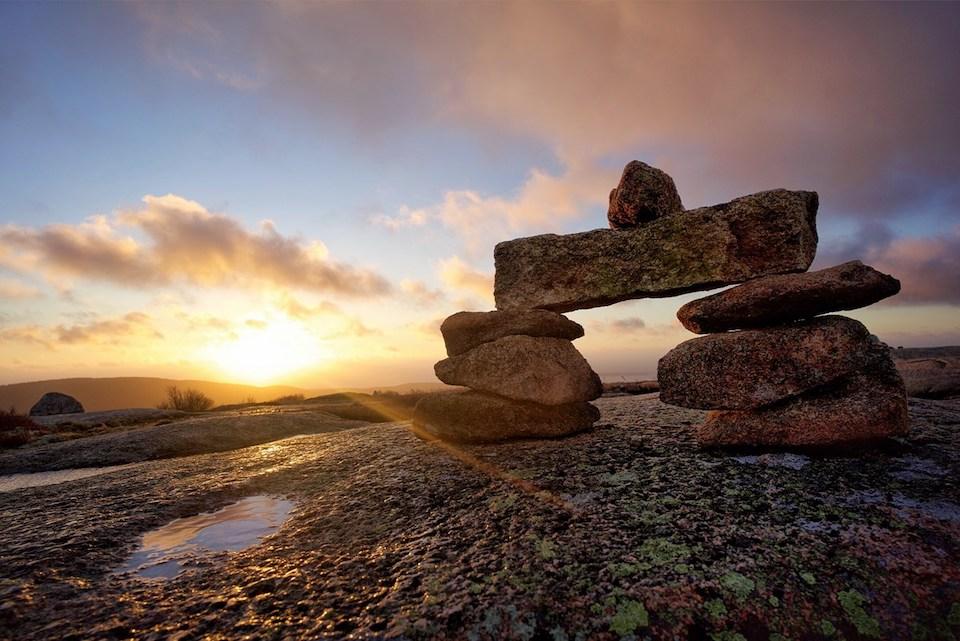
Though some find beauty in balancing rocks, Zion National Park officials discourage the practice/NPS
Cairns -- stacked rocks -- long have been iconic forms in the backcountry of national parks and forests, serving as directional guides to keep hikers on the right path. But stacking rocks for the sake of stacking rocks can mislead hikers and is discouraged in many national parks.
So unique and revered are rock cairns that David B. Williams wrote a book about them back in 2012. A former seasonal ranger at Arches National Park, Williams told the Traveler back then that, "I had noticed them all over the place and never given them much thought."
Indeed, during his rangering days Williams wound up spending more than a little time taking down cairns the park hadn't set up.
"I did a lot of destroying them as a park ranger, which is a very common. I talked to park rangers all over the place and they all have the same stories. It was a very common practice to do, mostly because there was concern for ecological issues, but also making sure that people didn’t get lost, or taken to areas that were beyond their abilities," said Williams. "And certainly in the desert, where it’s so fragile, one of your goals is to keep the people on the maintained trails.”
At Zion National Park in Utah, staff discourage the growing practice of "rock balancing," where people create abstract towers with rocks.
"Visitors that build these towers in Zion may not think this hurts the environment, but it can!" staff said in a recent Facebook post. "Moving rocks around exposes the soil to wind and water erosion and takes away shelter for many small animals. Also, rock stacks along trails could be confused as a trail marker and send a hiker in the wrong direction."
The post went on, noting that, "(W)hen people move rocks to create decorative cairns, they are altering the natural beauty of the park and leaving a mark on the landscape. Like graffiti, artistic expression like this has no place in our national parks. When at Zion, every responsible visitor should be following Leave No Trace principles. This means leaving no sign that a person traveled through the area. That's zero impact!"
At Acadia National Park in Maine, Waldron Bates is remembered for the unique cairn he designed to keep folks on the right path.

A Bates cairn at Acadia National Park Image Courtesy of Brandon Hoogerhyde
"One standard he developed was for building cairns in a unique style we now call Bates Cairns," the park notes on its website. "Acadia National Park is re-establishing this simple and historic style of cairn on the many east-side trails developed by this pathmaking pioneer.
"You can help us recover and retain this little piece of history. Please do not add to or build cairns or other rock objects. With thousands more hikers today than in Bates' era, tampering with rocks is damaging to the mountain environment. Leaving rocks where you find them preserves thin and fragile mountain soil, vegetation, and a more natural landscape."

"Rock balancing" on the Schoodic Peninsula of Acadia National Park/Kurt Repanshek




 Support Essential Coverage of Essential Places
Support Essential Coverage of Essential Places







Comments
It has become entirely normal to poison the earth constantly and massively for profit, but arguing against money is out, so we rather criticise some stone piles xD now that's satirical reality deluxe!
It's not an either/or thing. Posioning the earth for profit must be addressed as well as this! A park ranger is hardly in a position to lay charges at an oil executive, but they are in a position to stop people from interferring with the natural habitat for Instagram likes.
Yes, the photo at the top of the article is actually pretty obnoxious. I'm not an oil executive and I'm certainly against poisoning the earth for profit; but, I also try to avoid parading around national parks pompously building childish little monuments to myself that serve no conceivable purpose other than to stroke my own vain self-image.
Yeah, like always just treat the symptom to forget about the cause, how comfortable :D
Could you please link references to studies showing that moving rocks is damaging?
Yes, Beth, referring back to one of the earlier comments, I can, based on my personal experience and study, attest to the fact that the activity shown in the photo at the top of the article is hazardous to public health because the more I study that image, the more it makes me puke.